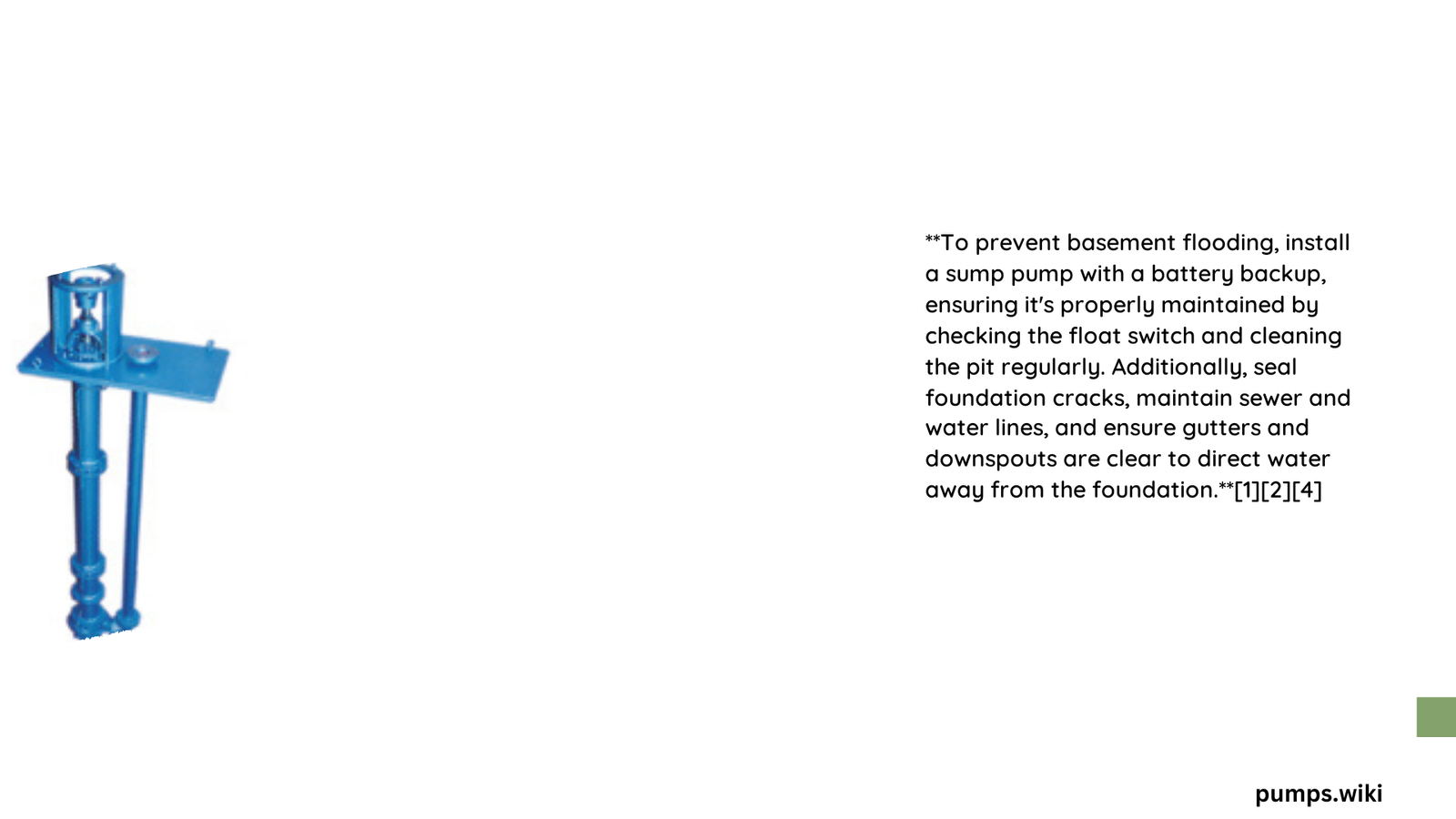Sump pumps are essential devices for preventing basement flooding, especially in areas prone to heavy rainfall or high water tables. These pumps work by collecting excess water in a sump pit and pumping it away from the foundation, effectively keeping basements dry. Proper installation, sizing, and maintenance of sump pumps are crucial for their effectiveness in preventing water damage and protecting your home’s structural integrity.
What Are the Key Components of a Sump Pump System?
A sump pump system consists of several important components:
- Sump pit: A basin dug into the lowest part of the basement
- Pump: The main device that moves water out of the pit
- Float switch: Activates the pump when water reaches a certain level
- Check valve: Prevents water from flowing back into the pit
- Discharge pipe: Carries water away from the house
Understanding these components is essential for proper maintenance and troubleshooting.
How Does a Sump Pump’s Flow Rate Affect Its Performance?

The flow rate of a sump pump is a critical factor in its ability to prevent basement flooding. Here’s a breakdown of flow rates and their corresponding horsepower requirements:
| Flow Rate (GPM) | Required Horsepower |
|---|---|
| Up to 50 GPM | 1-3 HP |
| Up to 65 GPM | 1-2 HP |
| Up to 75 GPM | 3-4 HP |
Selecting the right flow rate ensures that your sump pump can handle the water volume in your area, especially during heavy rain conditions.
What Role Does Horsepower Play in Sump Pump Effectiveness?
Horsepower is a key factor in determining a sump pump’s pumping power. Here’s a guide to choosing the right horsepower:
- 1/3 HP: Suitable for average-sized homes with normal water tables (7′-10′ vertical lifts)
- 1/2 HP: Ideal for homes with above-average water tables or higher vertical lifts (10-15 feet)
- 3/4 HP to 1 HP: Necessary for high water table areas or deeper basements (up to 20-30 feet)
Choosing the appropriate horsepower ensures your pump can effectively move water out of your basement, even under challenging conditions.
How Does Installation Depth Affect Sump Pump Performance?
The installation depth of a sump pump is crucial for its effectiveness. Two key factors to consider are:
- Vertical lift: The height water needs to be pumped from the sump pit to the discharge point
- Horizontal run: The length of the discharge pipe
For example, a 1/3 HP pump can handle 7′-10′ vertical lifts, while a 1/2 HP pump can manage 10-15 feet. Longer horizontal runs (30-150 feet) may require higher horsepower to overcome friction losses.
What Are the Cost Benefits of Installing a Sump Pump?
Installing a sump pump offers significant cost benefits:
- Average installation costs range from $500 to $2,000
- Prevents basement flooding, which can cost thousands in repairs
- Offers a high return on investment (ROI) by protecting your home
- Increases property value, especially in flood-prone areas
The initial investment in a sump pump can save homeowners substantial money in the long run by preventing water damage and preserving the home’s structural integrity.
How Can Regular Maintenance Improve Sump Pump Efficiency?
Regular maintenance is key to ensuring your sump pump operates efficiently:
- Perform checks every 2-3 months
- Clean the pump and sump pit regularly
- Inspect and clean the float switch
- Check the discharge pipe for blockages
- Test the pump by pouring water into the pit
By following these maintenance tips, you can extend the life of your sump pump and ensure it’s ready to prevent basement flooding when needed.
What Are the Different Types of Sump Pumps?
There are two main types of sump pumps:
Submersible Pumps
- Installed within the sump pit, submerged in water
- Generally more powerful and quieter
- Suitable for homes with major flooding concerns
- May have a shorter lifespan due to constant water exposure
Pedestal Pumps
- Motor mounted above the sump pit with an impeller at the bottom
- Less expensive and easier to maintain
- Less powerful but suitable for smaller water flow needs
- Typically have a longer lifespan due to less water exposure
Choosing the right type depends on your specific needs, basement configuration, and local water conditions.
How Can You Troubleshoot Common Sump Pump Issues?
Common sump pump issues and their solutions include:
- Constant cycling: Adjust the float switch or replace with a properly sized pump
- Pump failure: Regular maintenance and prompt replacement of worn parts
- Clogged intake: Clean the intake screen regularly
- Power outages: Install a battery backup system
- Frozen discharge pipes: Insulate pipes or install a special discharge line for winter use
By addressing these issues promptly, you can ensure your sump pump continues to protect your basement from flooding effectively.
In conclusion, a properly sized, installed, and maintained sump pump is an essential tool for preventing basement flooding. By understanding the key factors such as flow rate, horsepower, and installation requirements, homeowners can ensure their sump pump system provides reliable protection against water damage.
References:
1. https://www.sumpdirect.com/blog/selecting-the-right-sump-pump-size/
2. https://www.sumppumpsdirect.com/stories/104-How-To-Pick-The-Perfect-Submersible-Sump-Pump.html
3. https://www.freshwatersystems.com/blogs/blog/what-is-a-sump-pump-and-how-does-it-work/
